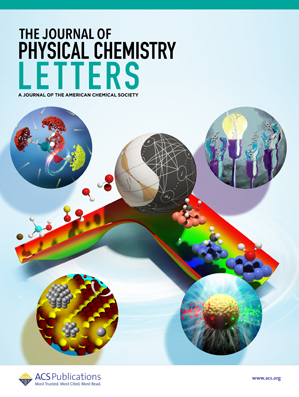Bayesian Optimization with Gaussian Processes Assisted by Deep Learning for Material Designs.
IF 4.6
2区 化学
Q2 CHEMISTRY, PHYSICAL
引用次数: 0
Abstract
Machine learning (ML) approaches have become ubiquitous in the search for new materials in recent years. Bayesian optimization (BO) based on Gaussian processes (GPs) has become a widely recognized approach in material exploration. However, feature engineering has critical impacts on the efficiency of GP-based BO, because GPs cannot automatically generate descriptors. To address this limitation, this study applies deep kernel learning (DKL), which combines a neural network with a GP, to BO. The efficiency of the DKL model was comparable to or significantly better than that of a standard GP in a data set of 922 oxide data sets, covering band gaps, ionic dielectric constants, and effective masses of electrons, as well as in experimental data sets, the band gaps of 610 hybrid organic-inorganic perovskite alloys. When searching for the alloy with the highest Curie temperature among 4560 alloys, the standard GP outperformed the DKL model because a strongly correlated descriptor of the Curie temperature could be directly utilized. Additionally, DKL supports transfer learning, which further enhances its efficiency. Thus, we believe that BO based on DKL paves the way for exploring diverse material spaces more effectively than GPs.基于深度学习的高斯过程贝叶斯优化材料设计。
近年来,机器学习(ML)方法在寻找新材料方面变得无处不在。基于高斯过程(GPs)的贝叶斯优化(BO)已经成为一种广泛认可的材料探索方法。然而,由于GPs不能自动生成描述符,特征工程对基于gp的BO的效率有很大的影响。为了解决这一限制,本研究将深度核学习(DKL)应用于BO,它将神经网络与GP相结合。在922个氧化物数据集中,DKL模型的效率与标准GP相当或显著优于标准GP,包括带隙、离子介电常数和有效电子质量,以及610个有机-无机杂化钙钛矿合金的带隙实验数据集。在4560种合金中寻找居里温度最高的合金时,标准GP模型优于DKL模型,因为它可以直接利用居里温度的强相关描述符。此外,DKL支持迁移学习,这进一步提高了DKL的效率。因此,我们认为基于DKL的BO比GPs更有效地为探索多样化的材料空间铺平了道路。
本文章由计算机程序翻译,如有差异,请以英文原文为准。
求助全文
约1分钟内获得全文
求助全文
来源期刊

The Journal of Physical Chemistry Letters
CHEMISTRY, PHYSICAL-NANOSCIENCE & NANOTECHNOLOGY
CiteScore
9.60
自引率
7.00%
发文量
1519
审稿时长
1.6 months
期刊介绍:
The Journal of Physical Chemistry (JPC) Letters is devoted to reporting new and original experimental and theoretical basic research of interest to physical chemists, biophysical chemists, chemical physicists, physicists, material scientists, and engineers. An important criterion for acceptance is that the paper reports a significant scientific advance and/or physical insight such that rapid publication is essential. Two issues of JPC Letters are published each month.
 求助内容:
求助内容: 应助结果提醒方式:
应助结果提醒方式:


